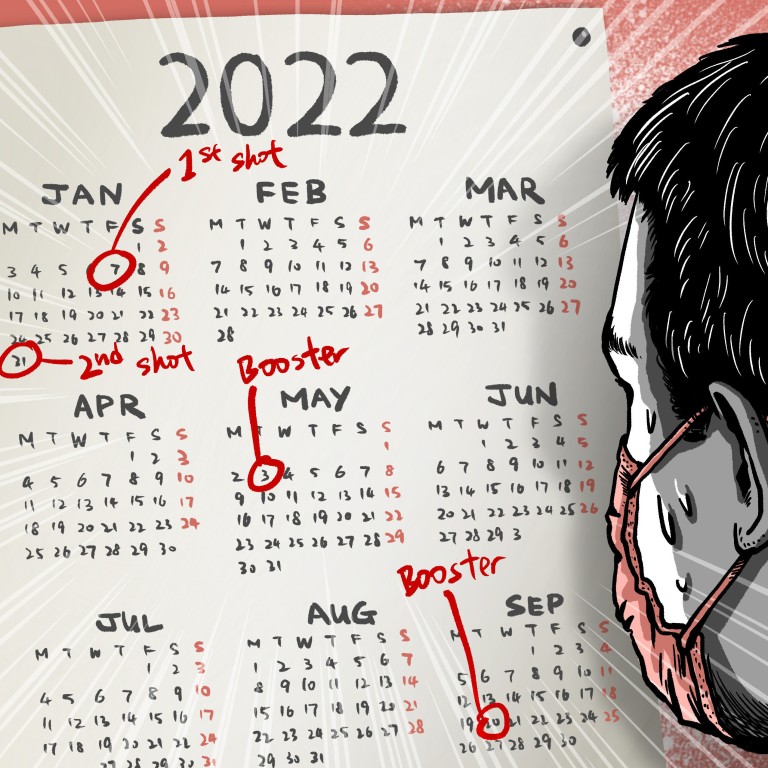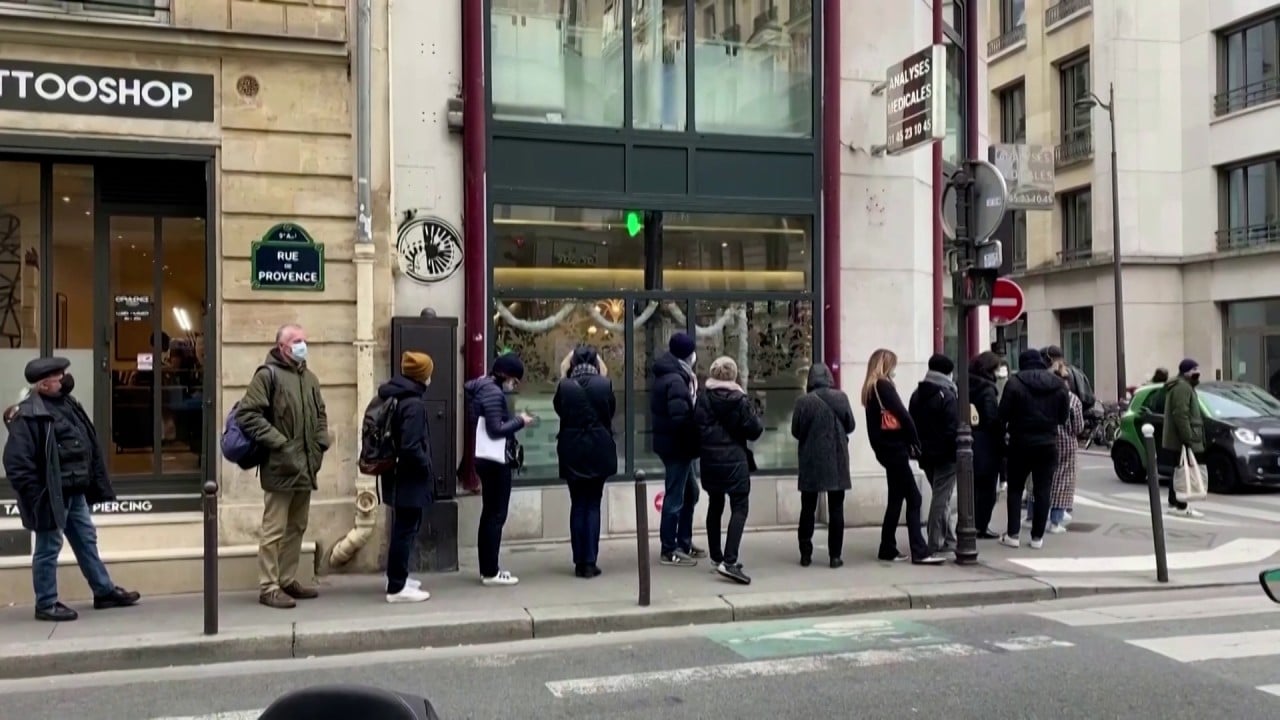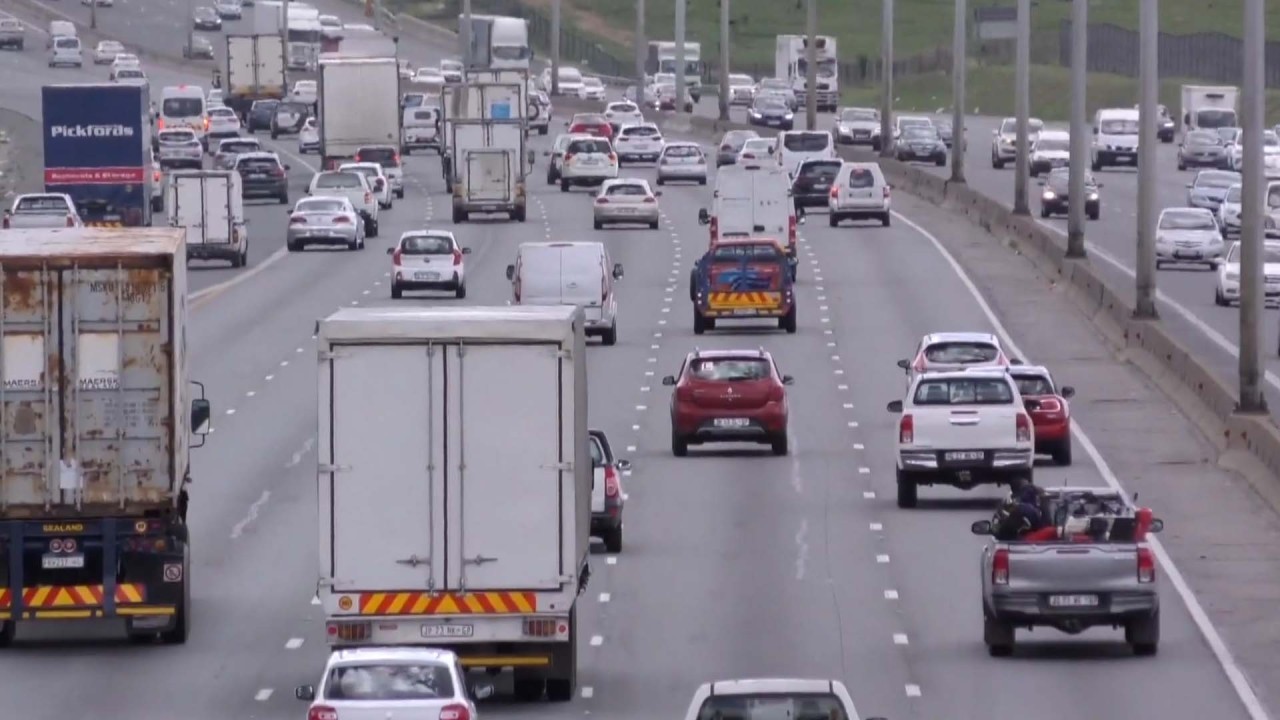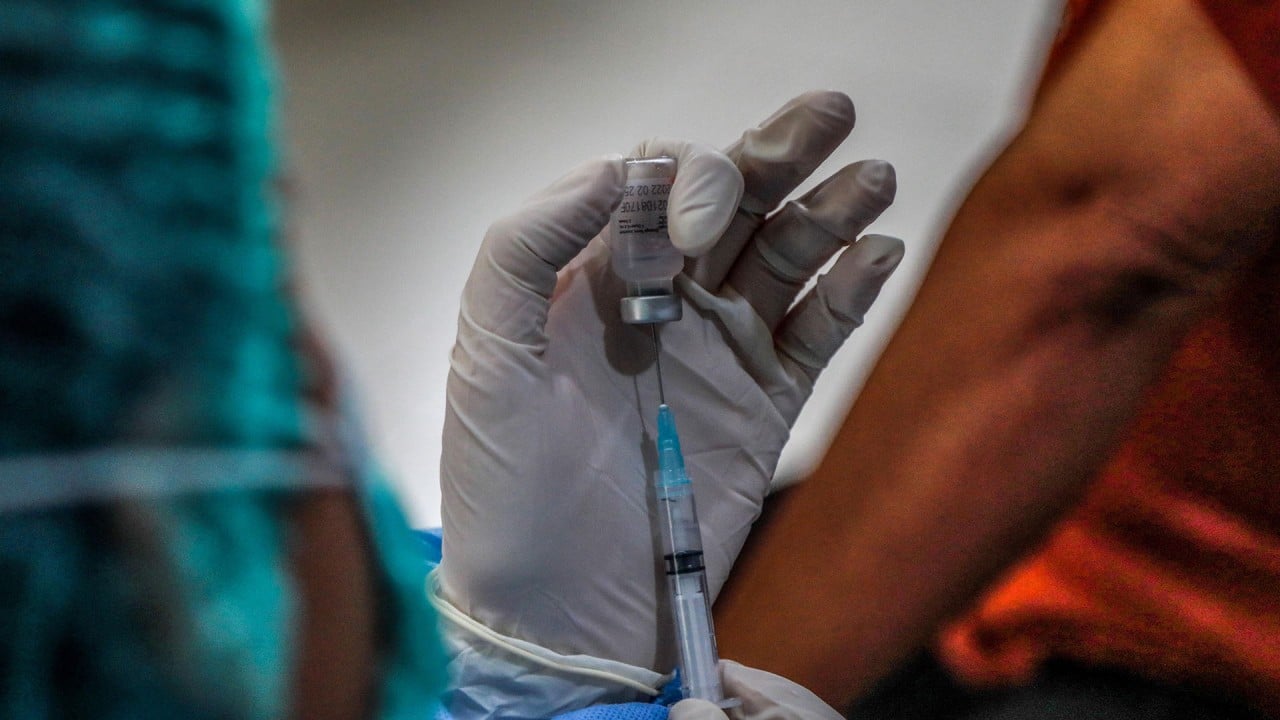
As Omicron upends Covid-19 vaccine targets, what will the future look like?
- Same-shot boosters or mix-and-match regimens, variant-specific or pan-coronavirus jabs – the data still unclear on the best way to prevent severe disease and death
- Given the many unknowns with Omicron, booster programmes with existing vaccines are only buying time for scientists and governments to find out more
This comes just a year after the country rolled out its vaccination campaign with Pfizer-BioNTech mRNA jabs, and about five months after a third, booster shot roll-out.
This action was prompted by data showing that the effectiveness of even the best performing vaccines like the mRNA shots waned in six months and these were less effective in protecting against the heavily mutated Omicron variant, thus raising further questions about what future vaccine programmes might look like.
Flu shots are given annually to adapt to different strains. But with Covid-19, many people have already had three shots in the past year alone.
Buying time
In the past two weeks, vaccine developers have released pre-review papers on laboratory tests to determine if a third dose could produce enough neutralising antibodies against the Omicron strain.
“The early signs are that the Omicron variant is less likely to lead to severe illness compared to earlier variants and while two doses of some vaccines offer significant protection against this variant, a booster dose restores protection against severe disease to a similar level that two doses gave against Delta,” according to Peter Smith, a professor at the London School of Hygiene & Tropical Medicine.
But whether three shots will be enough remains unclear.
“Currently, it seems that three doses of the mRNA [vaccine] provides sufficient protection against severe disease due to Omicron, but if it becomes evident that protection against severe disease is declining significantly with time since the third dose, then a fourth dose may become necessary,” Smith said.
However, Jerome Kim, director general of the International Vaccine Institute, pointed out that there were simply too many unknowns with Omicron, and that the booster programmes with existing vaccines were only buying time for scientists and governments to find out more.
“The current round of booster shots, with sub-optimally immunogenic vaccines based on the original strains, should be thought of as temporising – that is, [being] used to buy time. But really, being vaccinated every three months would be complicated, difficult to implement, costly and likely to face significant resistance.”
Covid-19 vaccines: Sinovac recipients ‘may need two booster shots’
He said scientists wanted to understand more about the new variant, and what was really protecting against it, such as antibodies or T cells. T cells are widely believed to be able to limit the progression of infections to severe disease.
While more breakthrough cases are expected with Omicron because of the lower level of neutralising antibodies existing vaccines can induce, scientists are trying to find out how cellular immunity can protect against hospitalisation.
Scientists also want to test if boosters using platforms other than mRNA work, and whether a specific Omicron-targeting vaccine would be needed.
“And what if a vaccine is needed to cover Omicron and the ‘original’ strain … Or will Omicron variant vaccines cover the original?” Kim said.
The decision is made more difficult by the lack of real world data about the efficacy of boosters. A noteworthy one so far has been a preprint by South African scientists that said a booster for the single dose Johnson&Johnson vaccine was 84 per cent effective at preventing hospitalisation among some 69,000 health workers.
However, another big unknown is whether the boosters work well on those who have never had the disease, because many in the South African population have had Covid-19 before and would have some antibodies from the previous infections.
And if continuous updates of a Covid-19 jab are needed, it remains unclear how well the vaccine will be able to catch up with mutations of the virus.
“At present, the predictability of what new mutations will emerge is poor and it is difficult to produce a new vaccine using the present methodologies to protect against a yet-to-be identified new variant,” Smith said. “This is not dissimilar to the problem with flu vaccines where predictions have to be made as to the make-up of flu viruses likely to circulate in the next flu season.”
In some years when scientists’ predictions of the dominant flu strains are wrong, the effectiveness of flu shots can be low.
China’s dilemma
With the emergence of Omicron, how well the inactivated vaccines – with their lower level of neutralising antibodies – can protect against severe disease becomes even more questionable.
The WHO has singled out inactivated vaccines as it recommended booster shots for the elderly and people with health issues.
Also, a preprint study by Yale University said two doses of the Sinovac Covid-19 vaccine boosted with one Pfizer-BioNTech shot would induce higher levels of protective antibodies than two Pfizer doses, but this combination was not sufficient to stop Omicron infection.
Some Chinese scientists have suggested inactivated vaccines may still be effective against Omicron because they target the entire virus, whereas most other vaccines target the spike protein, where most of the mutations occur.
Other Chinese scientists suggest that inactivated vaccines could still offer cellular immunity and protect recipients from being hospitalised.
However, there are still too many unknowns.
“This is where we didn’t plan well,” Kim said. “Do we know what ‘cellular’ responses protect? We are or were pretty certain about an antibody correlation of protection; cellular ones are more difficult, in part because storing cells on 30,000 people [for tests] is complicated, expensive and logistically demanding.”
But such research could still be done, he said.
“Could viral or inactivated vaccines generate responses that may be less subject to mutations in the ‘spike’ protein of Covid-19? Theoretically, yes. What responses to Sinopharm, Sinovac, Bharat or Valneva vaccines are relevant? Unfortunately, we don’t know.”
Kim said research should also be done to find out if improved adjuvants could help improve the performance of the inactivated vaccines.
However, there are still no mRNA vaccines in the Chinese portfolio. The Chinese regulator has not yet approved the mRNA vaccines by BioNTech, which has Shanghai Fosun Pharmaceutical as its sole distributor in Greater China, even months after an expert panel recommended it.
Also, there is no news about the trial results of a domestic mRNA candidate jointly developed by Walwax Biotechnology and Suzhou Abogen Biosciences, even though Feng Duojia, president of the China Association of Vaccines, said in April that China’s own mRNA vaccine might hit the market by the year-end.
China can learn from the West about mRNA vaccines: Zhong Nanshan
Huang Yanzhong, director of the Centre for Global Health Studies at Seton Hall University in New Jersey, said China would not want to send a message to the world that it lacked confidence in its own vaccines by approving a foreign-made booster.
“I think the main reason [for the delay in BioNTech vaccine approval] is that they will prefer to approve their home-grown mRNA vaccine first,” Huang said, adding China was also buying time to see if other platforms such as inactivated or protein subunit vaccines were good boosters.
“If they choose to use the imported vaccines even as booster shots, it’s going to send a message to users of the Chinese vaccines that the inactivated vaccines are not effective. And that is going to have an impact on the marketability of the Chinese vaccines.”
But this did not mean inactivated vaccines would be phased out.
“The question to ask is how well Chinese vaccines, as booster shots, are going to significantly reduce the risk of severe cases or death? But I don’t see any systematic data to support that.”




